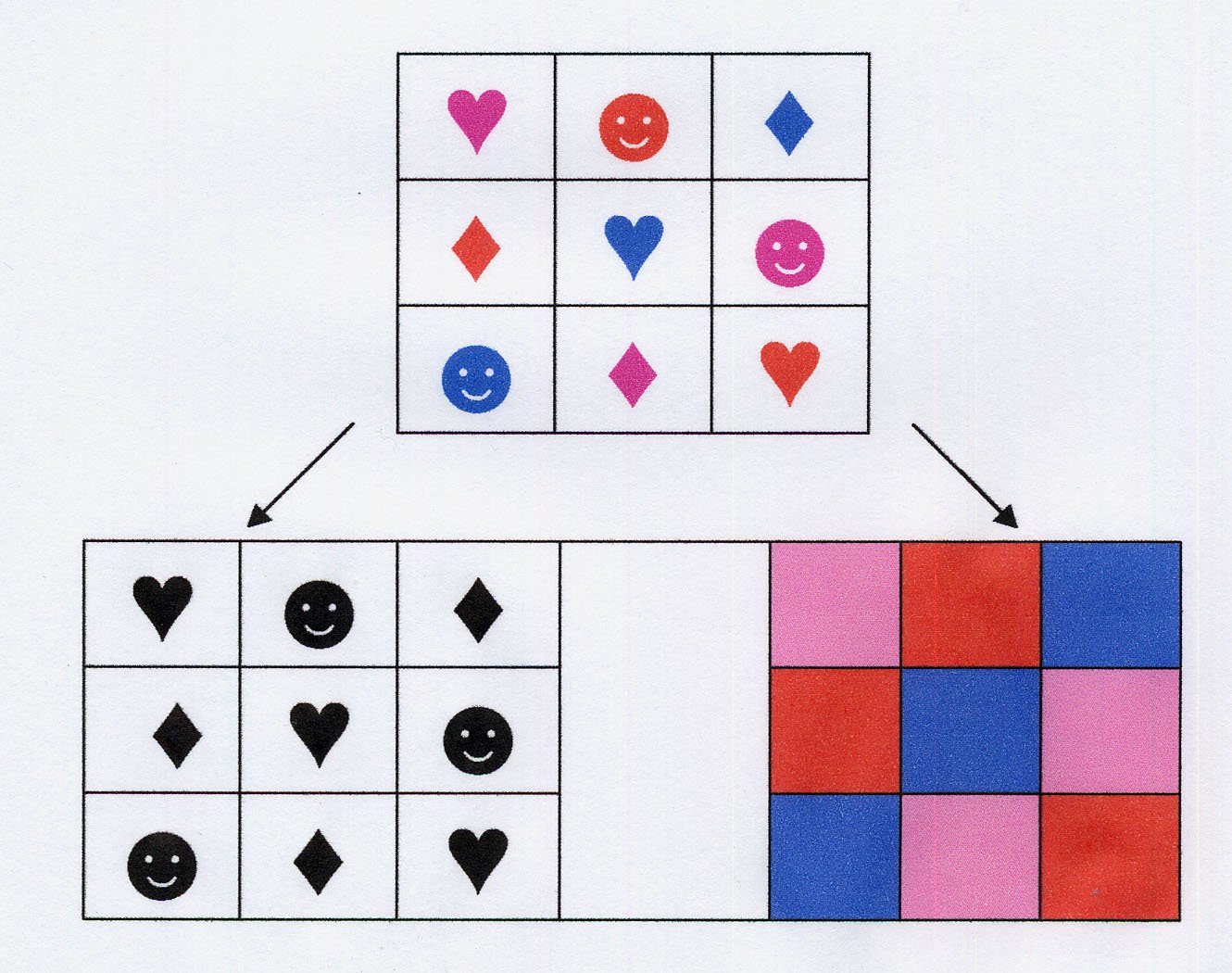- About MAA
- Membership
- MAA Publications
- Periodicals
- Blogs
- MAA Book Series
- MAA Press (an imprint of the AMS)
- MAA Notes
- MAA Reviews
- Mathematical Communication
- Information for Libraries
- Author Resources
- Advertise with MAA
- Meetings
- Competitions
- Programs
- Communities
- MAA Sections
- SIGMAA
- MAA Connect
- Students
- MAA Awards
- Awards Booklets
- Writing Awards
- Teaching Awards
- Service Awards
- Research Awards
- Lecture Awards
- Putnam Competition Individual and Team Winners
- D. E. Shaw Group AMC 8 Awards & Certificates
- Maryam Mirzakhani AMC 10 A Awards & Certificates
- Two Sigma AMC 10 B Awards & Certificates
- Jane Street AMC 12 A Awards & Certificates
- Akamai AMC 12 B Awards & Certificates
- High School Teachers
- News
You are here
Euler Squares - Euler's Officer Problem
In 1779, Euler examined the now famous officer problem [8]:
Six different regiments have six officers, each one belonging to different ranks. Can these 36 officers be arranged in a square formation so that each row and column contains one officer of each rank and one of each regiment?
Euler conjectured that there was no solution to this problem, or for any other Euler square of order 4n+2. This famous conjecture stood for over 100 years until Gaston Tarry, a French mathematician, proved the non-existence of the order six square by exhausting all possible arrangements by hand in 1901. In 1960, Parker, Bose and Shrikhande [9] used a computer to create an Euler square of order ten and subsequently proved that the only impossible Euler squares were of order two and six. An example of an Euler square of order ten can be seen here. An Euler square of order three is shown below with the dual attributes of symbol and color. The three symbols and three colors are placed so that no symbol or color is repeated in any given row or column. This Euler square can be decomposed into two Latin squares, one with the three symbols and the other with the three colors (see Figure 3).

Figure 3: An Euler square decomposed into two Latin squares
Elaine Young, "Euler Squares - Euler's Officer Problem," Convergence (May 2011)




